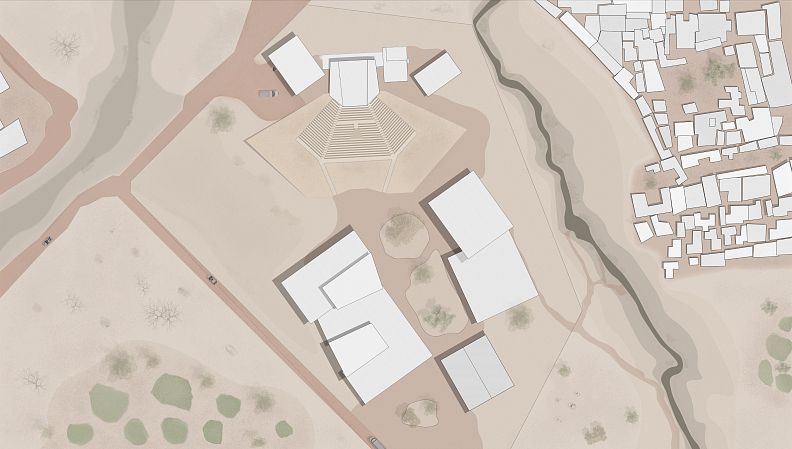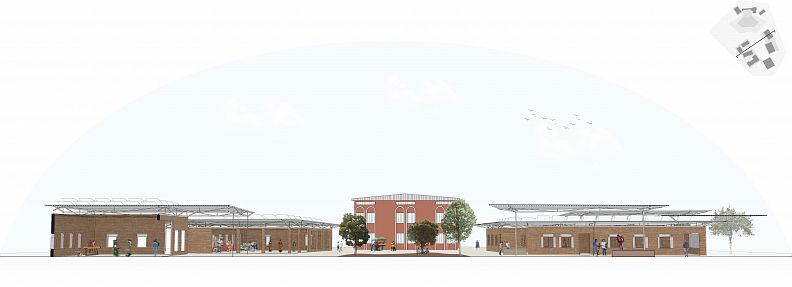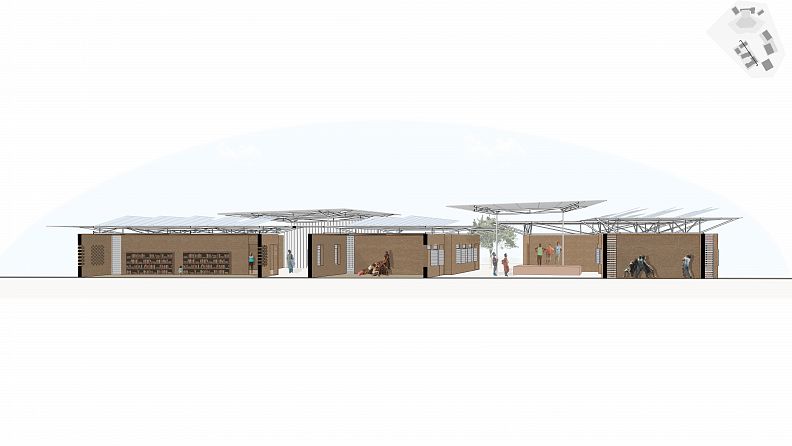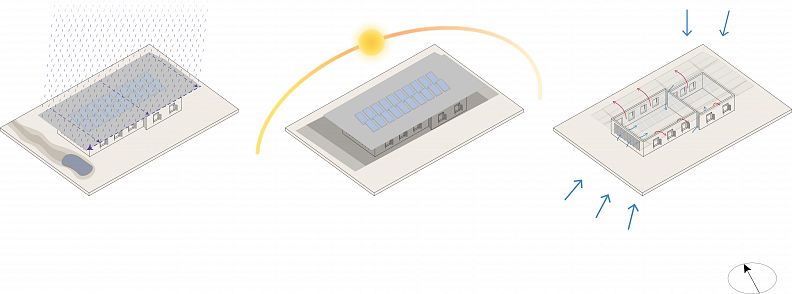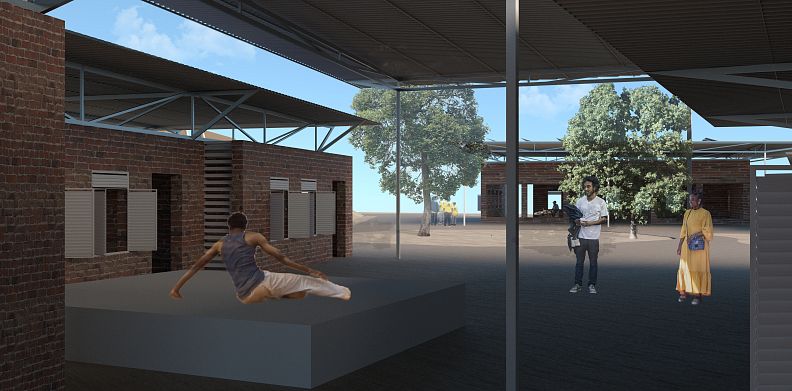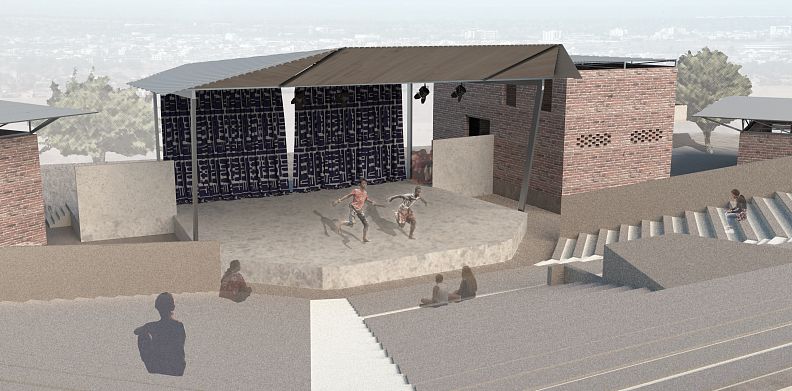Theatre Populaire

Project idea
The design proposal for the rehabilitation of the Theatre Populaire is based on the idea of the CDC-La Termitiere as a centre of a community - a community of artists, craftsmen, performers and students from Ouagadougou and Burkina Faso altogether.
The main ambition of the project is to bring together the various users and functions of the centre, by creating a shared space for the visitors, students and artists to meet, share ideas and view each other’s work,
The intention of the design is to create buildings and spaces that are both ambitious and forward-looking yet environmentally responsible and rely on local materials and traditions.
Project description
The proposed new buildings are centred around the path from the existing entrance to the theatre. The buildings are organised around a central open space of convividity, where all the different users of the centre can meet.
On the eastern side of the main open space are the workshops for sewing and stage sets. Although part of the WORK area, the proposed design places them at the centre of the compound, to connect the workers and makers with visitors and students and present their work. On the western side is the LABO area, comprised of four buildings housing the various educational functions. In-between the buildings are two shaded semi-open spaces: one for co-working and co-learning and one for small performances by the students.
Behind the theatre stage are the backstage functions, the garage and technical room. There is another separated open space and terrace for the performers, allowing them to hang out and relax before and after the show.
Technical information
The main idea behind the choice of materials and techniques is sustainability, achieved both through traditional methods and materials and modern technologies such as solar panels.
The new construction shall be made mostly from clay bricks, laying out the indoor spaces of the centre. Each building has a double roof – a lower ceiling made of wooden mats, providing acoustic and aesthetic value to the indoor space, and an upper roof made of steel structure and corrugated iron. The upper roof provides protection from sun and rain, and the air gap created between the two roofs provides ventilation and keeps the temperature of the room. The metal roofs stretch beyond the borders of the rooms and creates various semi-indoor shaded areas. The theatre stage is based on the same principle: steel structure, corrugated iron upper roof and wooden plates underneath it for acoustic purposes.
Each roof is equipped with solar panels, providing electricity to the compound. The shape and direction of the roofs are decided based on both sun direction and rainwater drainage. The rainwater flows from the roofs to drainage basins for future use or drained to one of the streams and channels surrounding the site
The windows and openings of the rooms are planned based on sun movement and wind directions on the site, each room is exposed to one of the two main wind directions (SSW and NNE) and metal shutters allow the wind to enter while preventing direct sunlight into the classes.

